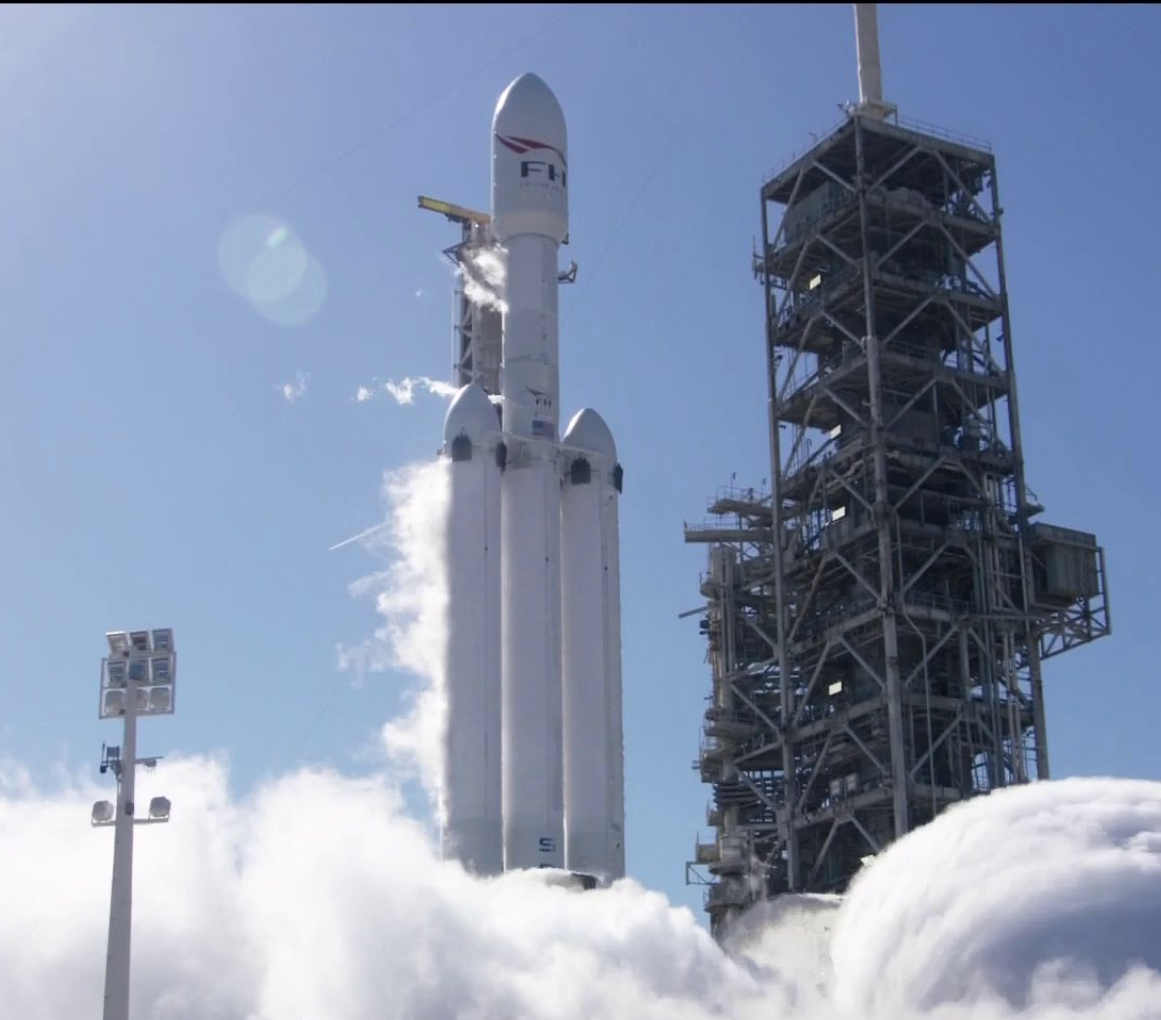SpaceX has superior payload to orbit efficiency than competing rockets. SpaceX has made advancements in rocket efficiency and has used some lighter weight materials.
In aerospace engineering, payload fraction is a common term used to characterize the efficiency of a particular design. Payload fraction is calculated by dividing the weight of the payload by the takeoff weight of aircraft. For spacecraft the payload fraction is often less than 1%,
The Falcon Heavy has a liftoff weight of 1421 metric tons and can put 63.8 tons into low earth orbit (4.49% payload to orbit)
The Delta IV heavy has liftoff weight of 733 metric tons (808 tons) and can place 28.8 metric tons (3.9% of payload) into low earth orbit.
Propellant Rocket Percent Propellant for Earth Orbit Solid Rocket 96 Kerosene-Oxygen 94 Hypergols 93 Methane-Oxygen 90 Hydrogen-Oxygen 83
Propellant Payment Energy (km/s)Destination Energy Cost (Km/s)
Surface of Earth to Earth orbit: 8
Earth orbit to cis-lunar locations:
Lagrange points: 3.5
Low Lunar orbit: 4.1
Earth orbit to near-Earth asteroids: over 4
Earth orbit to surface Moon: 6
Earth orbit to surface Mars: 8These are ideal numbers free from losses due to atmospheric drag, incomplete combustion, and other factors that reduce the efficiencies of a rocket. Such losses make these numbers even worse (moving the mass fraction closer to a rocket being 100% propellant). However, clever engineering constructs such as rocket staging, multiple kinds of propellants (1st stage solids or kerosene, upper stages hydrogen), and gravitational lean (converts radial velocity into tangential) can help compensate. When making a rocket that is near 90% propellant (which means it is only 10% rocket), small gains through engineering are literally worth more than their equivalent weight in gold.
Vehicle Percent Propellant (fuel)
Large Ship 3
Pickup Truck 3
Car 4
Locomotive 7
Fighter Jet 30
Cargo Jet 40
Rocket 85Rockets at 85% propellant and 15% structure and payload are on the extreme edge of our engineering ability to even fabricate. They require constant engineering to keep flying. The seemingly smallest modifications require monumental analysis and testing of prototypes in vacuum chambers, shaker tables, and sometimes test launches in desert regions. Typical margins in structural design are 40%. Often, testing and analysis are only taken to 10% above the designed limit. For a Space Shuttle launch, 3 g’s are the designed limit of acceleration. The stack has been certified (meaning tested to the point that we know it will keep working) to 3.3 g’s. This operation has a 10% envelope for error. Imagine driving your car at 60 mph and then drifting to 66 mph, only to have your car self-destruct.
The SpaceX BFR will be 4400 metric tons at liftoff and in non-usable mode will be able to deliver 250 tons to low earth orbit. This would be 5.68% payload. It could deliver 150 tons in reusable mode to LEO for 3.41% payload to orbit.
Brian Wang is a Futurist Thought Leader and a popular Science blogger with 1 million readers per month. His blog Nextbigfuture.com is ranked #1 Science News Blog. It covers many disruptive technology and trends including Space, Robotics, Artificial Intelligence, Medicine, Anti-aging Biotechnology, and Nanotechnology.
Known for identifying cutting edge technologies, he is currently a Co-Founder of a startup and fundraiser for high potential early-stage companies. He is the Head of Research for Allocations for deep technology investments and an Angel Investor at Space Angels.
A frequent speaker at corporations, he has been a TEDx speaker, a Singularity University speaker and guest at numerous interviews for radio and podcasts. He is open to public speaking and advising engagements.



